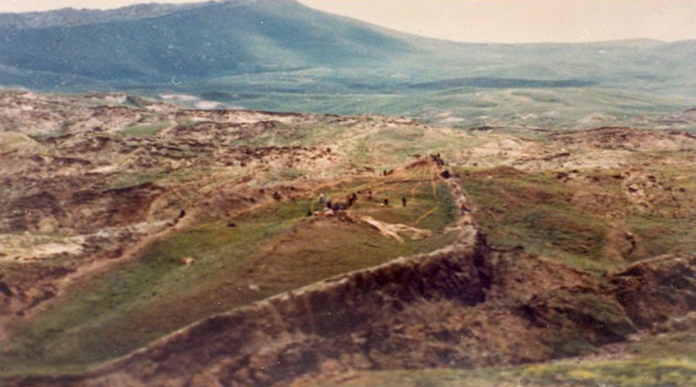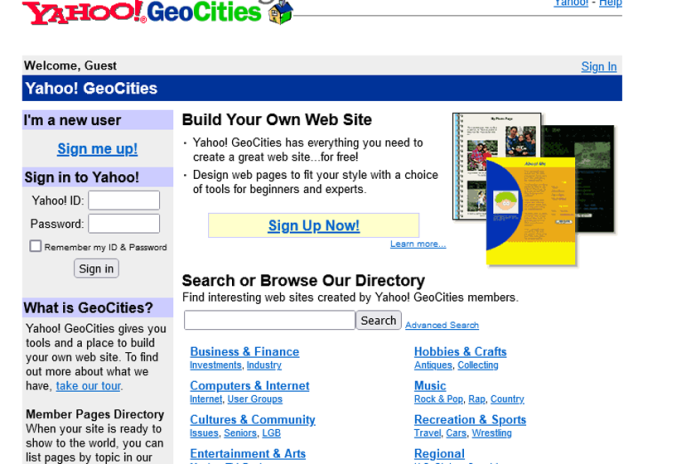Recently I had the opportunity to look at a documentary about how it is believed that Noah’s ark might have been found on Mt Ararat.
According to the documentary, back in 1949 images were captured during a USAF aerial reconnaissance mission over the former Turkish and Soviet border during the Cold War. In the images, a strange object can be seen poking out of the ice, around 15,500ft up Mt Ararat.
Also, according to the documentary, the six images that were taken in 1949 were released under the Freedom of Information Act to University professor Porcher Taylor more than 50 years later.
Fair enough I suppose, as these kinds of stories kind of strikes a cord of sorts to the extremely uninformed masses, who, for the most part, might be fairly ignorant when it comes to ancient history. (Ancient Aliens comes to mind here)
The Roman Empire from start to finish lasted roughly 1480 years, give or take a day or two (includes the eastern empire).
 We can still see the ruins of the mighty empire scattered about Europe in various places like Rome for instance, and even Hadrian’s Wall in Britain.
We can still see the ruins of the mighty empire scattered about Europe in various places like Rome for instance, and even Hadrian’s Wall in Britain.
During the course of and even after the complete fall of the Roman Empire, cut stone facades and road foundations were reclaimed for use in later structures — large wooden timbers were also reclaimed and used for other structures or for wood cooking and heat. The glory and glamour of all of Rome’s magnificence was recycled into other, less than stellar uses. Today, only about 10% of what once was Rome exists in it’s most recognizable forms.
The influence of direct Roman rule in the world ended roughly 600 years ago. We know quite a bit about Rome because people back in the day wrote everything down. Our own government is fashioned to reflect the rule of Rome even today, both in design and practice, as a result.
Now back to the Ark —
So the Lord called upon Noah, the only righteous man on the planet, to build an Ark. A certain extinction level event (ELE) was about to occur and God wanted to save Noah and his family from it.
So Noah builds this Ark, collects and secures multiple species of animals into it, and rides out the deluge.
When the flood waters subsided, Noah comes out of the Ark and the whole business of repopulating the planet again begins. Imagine the total devastation that Noah might have encountered upon after leaving the Ark. All that might have been familiar to him has been erased.
 We don’t know what sort of technology might have existed before the flood. But we can be fairly certain that it might have been much more advanced than anything we might have today. I mean, messing around with the gene pool and cross referencing the gene sequence of the animals was probably a pretty big deal back then — probably one of the reasons why the Lord decided to wipe the slate clean (all flesh was corrupt).
We don’t know what sort of technology might have existed before the flood. But we can be fairly certain that it might have been much more advanced than anything we might have today. I mean, messing around with the gene pool and cross referencing the gene sequence of the animals was probably a pretty big deal back then — probably one of the reasons why the Lord decided to wipe the slate clean (all flesh was corrupt).
Now imagine, if you will, a wooden structure, positioned tenuously on a cliff side, 442 feet by 74 feet by 44 feet. Maybe it’s broken in half, or maybe into 3 pieces on the account of it’s over all weight. 14 thousand feet into the air.
As a society, we all presume to know so much about everything. I mean, we all know about the rise and fall of the Roman Empire, so it would only stand to reason that we would know all about the Ark’s history too, right?
Anyone who might seriously believe in Christ, and reads the Bible on a daily basis, might notice that God is fairly light on providing info on the dates and times of these events happening. How long was Adam alive before he sinned? What year did the great flood occur? What date did Noah land in the “mountains of Ararat?”. Hasn’t anyone noticed that God is fairly quiet on various specifics for a reason? He only gives us the times for various certain things that might be relevant to our salvation or relevant to us learning about how He is.
The date that Adam sinned is irrelevant. The date for the flood is irrelevant. See how that works?
Humans might be intelligent enough to being able to provide a “best guess” for a time table with regard to the flood but that’s about it. (most of the best guesses that humans make are just that — best guesses)
Remember, human nature is a constant. When Noah left the Ark, the planet was devastated. I’m pretty sure that all of the milled timbers contained in the Ark provided all of the material needed to build him and his family a nice little house down in the valley.
When God gave Noah instructions on how to build the Ark, it was to be covered, inside and out, with pitch. Anyone who has ever been to hunting camp knows just how well pitch can burn. The Lord knew how devastated the planet would be, and via the Ark, provided Noah and his family with all of the needed materials to have shelter and to stay warm.
Not too unlike how the Roman Empire was repurposed after it’s fall, the Ark too was also very likely repurposed once it’s initial usefulness was completed. Even if the Ark wasn’t repurposed, which quite possibly it was, just how long do you think the Ark timbers would have lasted? 1,000 years? 4,000 years? Short of being buried in an English bog, how long does wooden objects last these days?
 In spite of it all, I find it hard to imagine what with all of man’s presumed intelligence that he would go chasing after the shadows on the cliff faces of mountains, especially cliff faces of mountains that might not have even existed 8,000 years ago. Mount Ararat is a polygenic, compound stratovolcano.
In spite of it all, I find it hard to imagine what with all of man’s presumed intelligence that he would go chasing after the shadows on the cliff faces of mountains, especially cliff faces of mountains that might not have even existed 8,000 years ago. Mount Ararat is a polygenic, compound stratovolcano.
The 6 images taken back in 1949 were top secret because they belonged to the military and were taken during a top secret operation. The government didn’t keep them top secret to hide an Ark. The government kept it top secret because that’s what governments do when they don’t want others to know what they’ve been up to.
When we discuss things like Noah’s Ark for instance, it might be a wise thing to consider all of the other very relevant variables that might come into play — things like plate tectonics/continental drift, volcanism, weather/climate change, and other little inconvenient what-nots that are seemingly always left out because they’ll just get in the way of the narrative.
Noah’s Ark I’m afraid, has gone the way of the Ark of the Covenant, and the Holy Grail, because you see, we’re not real sure that the Lord is really into preserving the things that were made by the hands of men. I’m pretty sure that God would much rather have us worshiping Him instead of some piece of old rotten wood that was found on some obscure mountain top somewhere.









New bills in the Montana Legislature
It’s been somewhat of an odd year indeed here in Montana, with regard to the Legislature, what with all of the Corona Virus in’s and out’s.
A rather mixed bag of sorts to say the least. Some counties under mandates and others not, mixed messaging and confusion over some of the simplest things made for some rather delightful conversation down at the local feed store.
Was it really as bad as people say? Well, that really depends on who you talk to I guess, but here in Cascade County things pretty much moved along as one might expect. The population of Great Falls is such that caused our county health department a bit of concern (our county mask mandate only lasted for 2 weeks), but we were no where near the panic stricken hordes that were found in other counties around the state. Missoula County for instance, even today, plans to keep it’s mask mandates into perpetuity, and in Lewis and Clark County for instance, we’ve got county health officials, to a point, actually threatening and verbally abusing shoppers at grocery stores.
According to police reports, the second-highest-ranking Lewis & Clark County health official, Eric Merchant, was removed by police from a local grocery store for making physical threats and verbally assaulting customers for not wearing masks. After his expulsion, Merchant was given an indefinite trespass order from the establishment. – Montana Daily Gazette
As a result of all of the asshattery that’s gone on over the past year, we now have the Montana State Legislature stepping in to try to cool the heels of our dear mask Nazi extremist friends.
Recently, according to KTVQ in Billings, The Montana House has endorsed a bill that would let the public ask for an election to change local health boards’ actions.
Oh, and there’s more — Besides just Senate Bill 108, there’s also other like minded legislation coming, like House Bill 121, and House Bill 257 for instance.
Many of my dear liberal friends seem to be all up in arms over these new rounds of legislation, citing Republican indifference to the health of our state citizens.
We here in Montana are a fairly independent minded bunch. Short of having un-elected officials screaming at shoppers, we manage to move through our days with relative ease.
No — We don’t have hundreds of off-cocked radical liberals roaming our city streets in Montana, but we do have a few that couldn’t seem to keep their ever loving mouths shut because they might have control issues. We now have these house bills advancing in Helena as a result. Blame the Republicans? Sure, why not. Our liberal friends might do well to understand however, that for every action, there will be an equal and opposite reaction.
All of this legislation could have been prevented if people could have just minded their muse, and with county health departments acting responsibly, without any sort of political bent.
A reminder … it is possible to be both fully aware that covid is real and deadly while still believing that many of our approaches to handling it have been absurd, ineffective, disproportionate, and immoral.